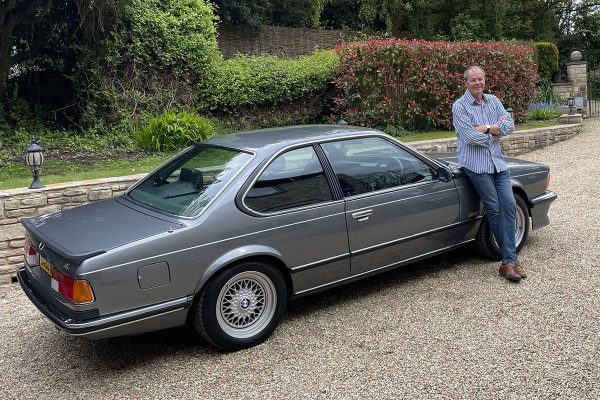MANAGING business car lead times is going to become more complex as car makers flex production capacity depending on economic demand – as editor Ralph Morton explains in this special report.I WAS browsing through a quarterly update from PwC Autofacts just to keep abreast of what was happening to the auto world on a global scale when I stumbled across this passage headed ‘reduced build schedules’.
The alarm bells started ringing. Lead times again.
PwC went on: “Europe’s sovereign debt crisis has caused vehicle manufacturers to reduce build schedules and mandate plant downtime in Q4 2011 to decrease the risk of entering a possible downturn with high stock levels. One European automaker has detailed that the company entered the 2008 downturn with approximately 75 days’ inventory, but presently has 66 days’ supply and will continue to actively monitor the market.”
I must point out that the briefing was upbeat about the nature of the global car industry – it was just noting some possible downside risks.
However, whether you are a sole trader, a director of your own micro business, or a business car manager of a larger SME fleet of company cars, it’s worth taking note – don’t expect to jump into a new car the moment you order it.
This is especially the case if you are coming towards the end of your contract hire agreement. It’s worth a bit of planning, whether with your business sales manager at your local dealer if the car is on a dealer finance lease or you purchase your cars, or with the business car adviser at your leasing provider.
Different lead times for different brands
Understanding lead times is important. Depending on the brand and the model can make a big difference to supply. Even on some standard models where demand is high or production capacity limited lead times can stretch to six months.
That means you could be into extending the contract hire lease over the agreed time – which might involve additional premiums. Or possibly hiring a vehicle for the interim period. For firms that buy their business cars, it might mean a lower second hand value thanks to the extended period the car is required to run.
“We keep in close contact with all the manufacturers and advise our customers on lead times – including choices with shorter build schedules or imminent availability from dealer allocations. But, with waiting times as long as six months becoming more common, it’s very important for fleet managers to encourage their drivers not to leave replacement decisions until the last minute,” says Matt Sutherland, chief operating officer of leasing company Alphabet.
“If a new car still isn’t available when a contract ends, we can usually extend the existing contract to save the customer the inconvenience of arranging a short-term vehicle until the replacement lease car is delivered.”
There are plenty of manufacturers around, though, that do have good stock you can tap into.
“We’ve got good availability on our mainstream models, including Mazda6 Business Line,” says Steve Jelliss, the fleet and remarketing director for Mazda.
“Given the Business Line’s tax rating, specification levels and the fact that there are long waiting lists for many alternatives from other manufacturers we are anticipating strong demand for the car,” Mr Jelliss adds.
Volvo’s national corporate operations manager, Selwyn Cooper, reckons that recently he has seen some larger company car fleets adding Volvo to choice lists through a combination of availability and product range. “We replaced one brand based on shorter lead times – normally just 6-8 weeks from either our Swedish or Belgian plants,” he says.
Specification and the impact on lead times
Understanding – and managing – lead times is important, though, especially for business owners or SME directors who want to get a new car ‘just right’ with the options that make it bespoke.
It’s a point that Amy Wand, Audi’s product manager for A6, elucidates further: “The minimum lead time for a 2.0 TDI A6 is four weeks although it can increase up to 12 weeks. The 2.0 TDI Multitronic, though, currently has a longer lead time – more around the 8-12 week mark and that’s because it was introduced in the summer, rather than from launch in April. So the lead time is partly symptomatic of that later availability.
“However, these are just a guide – precise timescales depend upon the exact specification of vehicle chosen, including certain options which may mean longer lead times.”
And that’s the point. Car makers make much of their option packages which can really enhance the ownership experience. So if it’s worth getting the options right, it’s also worth managing the ordering process correctly, too.
More than ever, business owners and business car managers need to manage and control more expertly the expiry of a lease agreement – or sale of a company owned car – with the commencement of a new car and a new lease. Otherwise frustration – and additional expense – can sour the experience.
Expert commentary from Fleet Alliance on company cars
Lengthening lead times have been a feature of the fleet market for the last few years, and all businesses need to adopt a new mind-set in this area. The days of 10-14 days from order to delivery are a thing of the past.
Our contract renewal notifications are now issued to clients 6 months before expiry – previously they were issued 3 months in advance. We have also adopted a new flexi-hire offering which allows clients who will have a gap between collection of their old vehicle, and delivery of a new one to stay mobile at a reasonable cost.
As the article suggests, some manufacturers are better placed than others and SMEs should consult their fleet provider who can easily give a rough idea of availability per marque.
Our average time period from order to delivery is 80 days (down from a peak of 92 days) earlier this year. This need not be a problem if SMEs work closely with their fleet provider and order earlier than they would have previously.
Martin Brown
managing director of fleet solutions provider, Fleet Alliance








